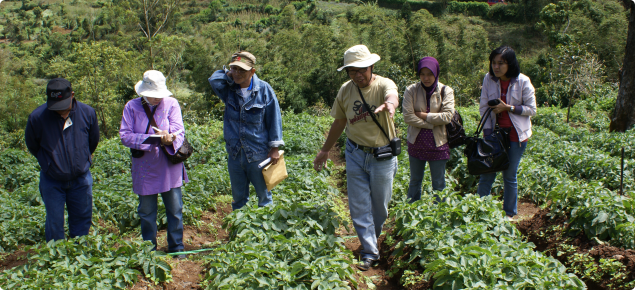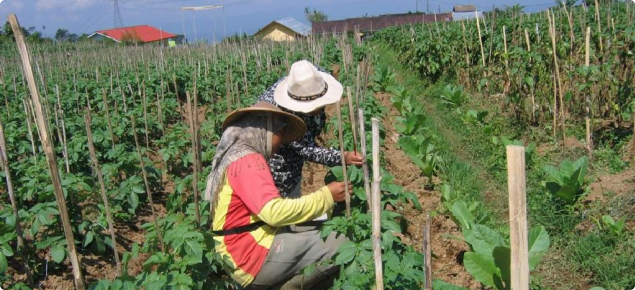Identification
The Indonesian name for leaf eating ladybirds is “epilachna” and their scientific name is Epilachna sp.
Leaf eating ladybirds are insects that affect potato plant vigour by feeding on the leaves.

The first pair of wings is modified to a hard cover with the second pair of wings folded underneath this cover. The second pair of wings allows the beetles to fly.


Management
Leaf eating ladybirds feed on solonancae or plants in the same family as potatoes such as tomato, tobacco and the weed, night shade. Remove any such plants near potato crops if this is practical.
Check potato crops for leaf eating ladybird stages of leaf damage during weekly pest monitoring. These beetles are more likely to be abundant during hot weather.
Leaf eating ladybirds cause damage only when present in high numbers. They have no natural enemies.
If leaf loss from the ladybirds reaches about 25%, a contact insecticide should give control.
Acknowledgment
Funding for this work to support Indonesian potato farmers and WA seed potato exports was provided by ACIAR (Australian Centre for International Agricultural Research) and the Department of Primary Industries and Regional Development, Western Australia.





